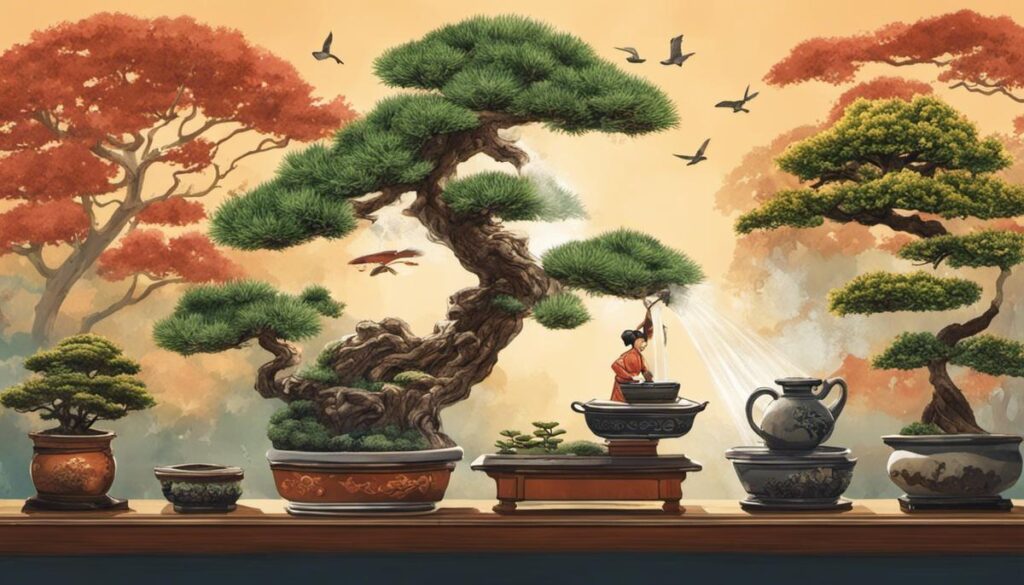Engaging in the art of Bonsai is an immersive experience that dips into history, culture, botany, and personal mindfulness. Bonsai, a tradition with deep roots in several societies, is more than just growing miniature trees. It encompasses an understanding of the very essence of these plants, their growth patterns, requirements, and nuances.
This guide delves into the very heart of Bonsai, taking you on a journey from its historical origins and cultural significance, through to the intricacies of selecting your own tree and providing it with the best environment for growth. It will arm you with the essential knowledge on proper Bonsai tree care, including watering, fertilizing and repotting essentials.
Understanding Bonsai Basics
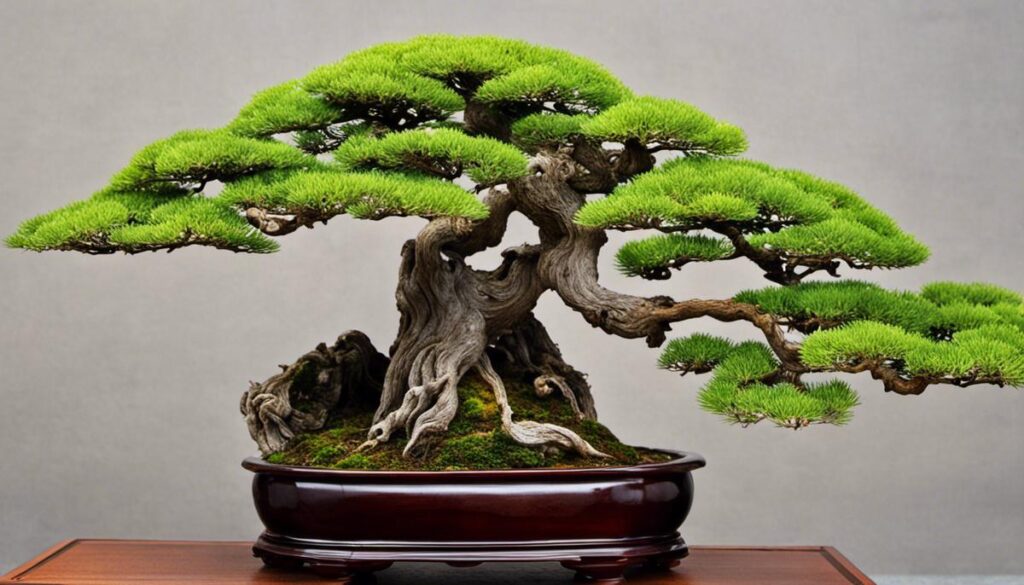
What is Bonsai?
Bonsai is a Japanese art form that involves growing miniature trees in small containers. The word “Bonsai” literally translates to “planted in a container” in English. The purpose of Bonsai is to create a realistic, but miniaturized representation of nature. It is an intricate combination of gardening, fine art, and horticulture.
Bonsai History
Bonsai is said to have originated from China over a thousand years ago, largely inspired by the miniature landscaping in traditional Chinese garden art. It later evolved into its current form in Japan, where it was greatly influenced by the nation’s Buddhism-driven respect for nature and love for beauty. Bonsai then started to spread worldwide after World War II, mainly due to the influence of the U.S. soldiers stationed in Japan, who took the culture back home and helped spread it to other western nations.
Cultural Significance of Bonsai
Bonsai holds a significant place in many cultures, particularly in Japan and China. It is regarded as a symbol of peace, harmony, order of thoughts, balance and the beauty and mysteries of nature. In Buddhism, it is seen as a way to symbolize the ultimate union of life, whereby man, the tree, and the soul, become one.
Types of Bonsai Trees
There are various types of bonsai trees, categorized typically by size and shape. Some popular types include Japanese Maple, Juniper, Ficus, Pine, and Azalea. Each type requires unique care and techniques for growth and maintenance.
Bonsai Tree Care
Bonsai tree care involves watering, fertilizing, and repotting.
Watering should be performed when the soil gets slightly dry. The frequency of watering will depend on the climate, type of tree, and the size of your pot. Important to note is that neither over-watering nor under-watering is good for a bonsai tree.
As for fertilizing, during the growth season, it should be done weekly or bi-weekly, depending on the variety of bonsai tree. A water-soluble, balanced fertilizer is typically recommended. During winter, no fertilization is necessary.
Lasty, re-potting is an essential part of bonsai tree care, as it prevents the tree from getting pot-bound and starving. It’s typically done every two to five years, again depending on the type of tree and size of the pot. The process involves removing the old soil, pruning the roots, and then placing the tree back into the pot with new soil.
By understanding and respecting these principles, you can embark on the rewarding journey of growing and maintaining a bonsai tree, a beautiful living piece of art.

Bonsai Tree Selection and Planting
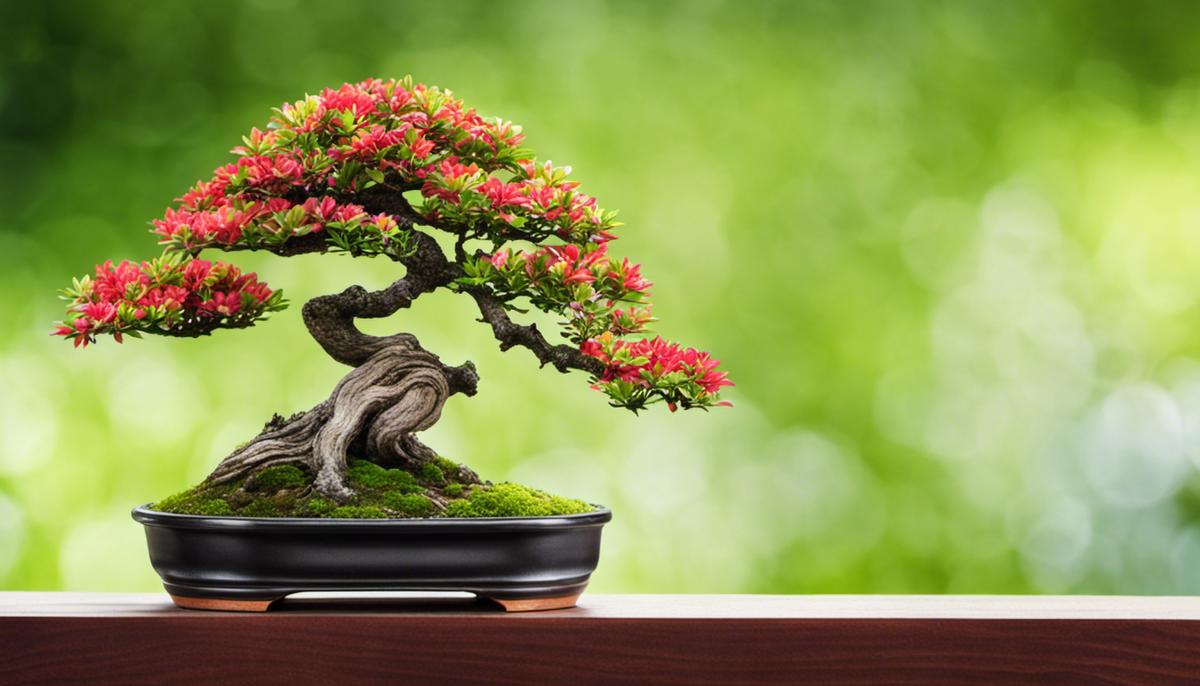
Choosing the Right Bonsai Tree
When considering what type of Bonsai tree to grow, there are several factors to consider. First, consider your local climate, because not all Bonsai trees do well in all climates. Tropical and subtropical varieties, for example, do not fare well in colder climates and would require indoor winter care. In contrast, Maples, Junipers, and Pines are hardier and can withstand more temperate climates.
Cost is another factor to consider when deciding on a Bonsai tree. Particular species, older trees, and trees grown by reputed Bonsai nurseries tend to come at a higher price. If you’re a beginner, it’s recommended to start with a less expensive, younger Bonsai as they are easier to shape and manage and less of a financial loss if anything goes wrong.
Consider the amount of time you can commit to your tree as Bonsai trees require consistent care. Some species require more attention than others. For instance, outdoor trees often require daily watering, and certain species may need regular pruning and wiring to maintain their shape. Indoor trees may require less frequent watering but will still need regular attention to light, humidity, and temperature conditions.
Finally, consider aesthetics. Each Bonsai tree has its unique appeal, from the charming twist of a Chinese Elm to the bold color of a flowering Azalea. Reflect on what appeals to you, keeping in mind that the goal is to create a miniaturized, but a realistic representation of nature in the confines of a pot.
Planting Your Bonsai Tree
Before planting your Bonsai, select an appropriate pot. The size and shape of the pot can vary depending on the style you’re aiming for, but it should have enough depth to accommodate your tree’s root system and have drainage holes to prevent water accumulation.
Start by covering the pot’s drainage holes with a screen to prevent soil erosion. Then, add a layer of Bonsai soil into the pot. Use a specific Bonsai soil mix, which is designed to retain the right amount of water and provide good aeration for the roots.
Remove your tree from its original pot and gently untangle its roots. Trim back any overly long roots to keep the tree’s size in check.
Place your Bonsai tree into the new pot, spreading the roots out over the soil. Ensure the tree is centered (or positioned according to your aesthetic preference), and upright.
Cover the roots with more Bonsai soil until the roots and the root flare (the base of the tree trunk) are just covered. Tamp the soil down with a chopstick or a Bonsai soil scoop to expel any air pockets and secure the tree.
Finally, water your newly planted Bonsai thoroughly. The water should drain out of the bottom of the pot, ensuring that the entire root system gets watered. Remember not to let a Bonsai ever dry out completely, but regularity will depend on the specific tree.
As the tree grows, pruning, wiring, repotting, and other Bonsai techniques will come into play, but at this stage, your primary goal is to provide a conducive environment for it to thrive and grow. Neem oil or other insect deterrents may also be beneficial to keep your Bonsai healthy.
With these factors in mind, you are equipped to select and plant a Bonsai tree. The art of Bonsai is a journey of patience and careful cultivation, now it’s time to embark on that journey yourself.
Bonsai Tree Maintenance and Styling
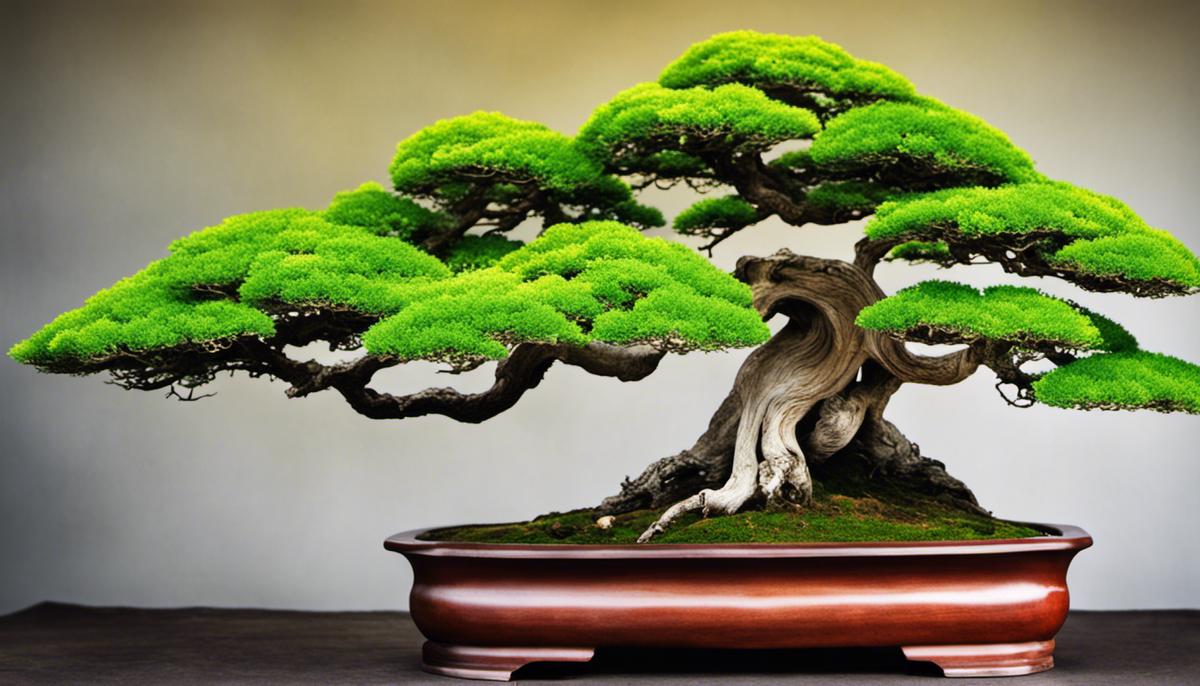
Understanding Bonsai Tree Maintenance and Styling
Bonsai trees, despite their small size, are very much like their larger counterparts in nature. They require regular light, water, and nutrients to thrive. The first key element to bonsai tree maintenance is ensuring it receives adequate sunlight. Place your bonsai tree in a location where it can receive morning sunlight and afternoon shade. If you’re growing your bonsai indoors, consider using a grow light to supplement natural light.
Watering your bonsai tree is another crucial aspect of its care. There is no set schedule for watering a bonsai because its needs can depend on factors like the tree’s size, the pot size, and the type of soil used. Instead, check the soil’s moisture level every day. If it feels slightly dry, it’s time to water. When watering, continue until water begins draining from the holes in the bottom of the pot.
Selective pruning is one of the most crucial aspects of bonsai tree maintenance. This practice helps your bonsai maintain its miniature size while still promoting the growth of a full, healthy canopy. Use sharp, clean shears to prune your bonsai, cutting back to the first pair of leaves on each branch.
Bonsai Tree Wiring and Shaping Techniques
The fundamental technique for shaping a bonsai tree is wiring. Copper or aluminum wire is wrapped around the tree’s branches and trunk to guide its growth into a specified shape. Bonsai wire comes in different thicknesses; use the appropriate wire based on the branch’s strength and flexibility.
To wire a bonsai, begin by anchoring the wire to a sturdy part of the trunk. Then, carefully wrap the wire around the branch you wish to shape. Make sure the wire is tight enough to hold the branch in place but loose enough not to cut into the bark. Bend the branch into the desired position gradually and gently.
After wiring, it’s crucial to monitor the bonsai tree’s growth regularly. As the tree grows, the wire will gradually cut into the bark, which can cause permanent damage if not addressed. If this occurs, remove the wire gently with wire cutters, ensuring not to damage the branch.
Monitoring and Preventing Bonsai Pests and Diseases
Like any plant, bonsai trees can be susceptible to pests and diseases. Common problems include aphids, spider mites, fungal diseases, and root rot. Regularly cleaning your bonsai tree can help prevent many of these issues. For example, a gentle wash with a mild dish soap and water can deter insect pests.
For fungal diseases, use a specialized fungicide according to the package instructions. Root rot, typically caused by over-watering, can be mitigated by ensuring the tree is properly drained and not left in standing water.
By consistently checking your bonsai tree for signs of pests or disease, such as discolored leaves or unexplained leaf drop, you can catch issues early and treat them effectively.
Overall, bonsai tree maintenance and styling require a bit of skill and plenty of patience. Regular care, including watering, pruning, and reshaping, can result in a small, majestic piece of nature that can live for many years with the right attention.
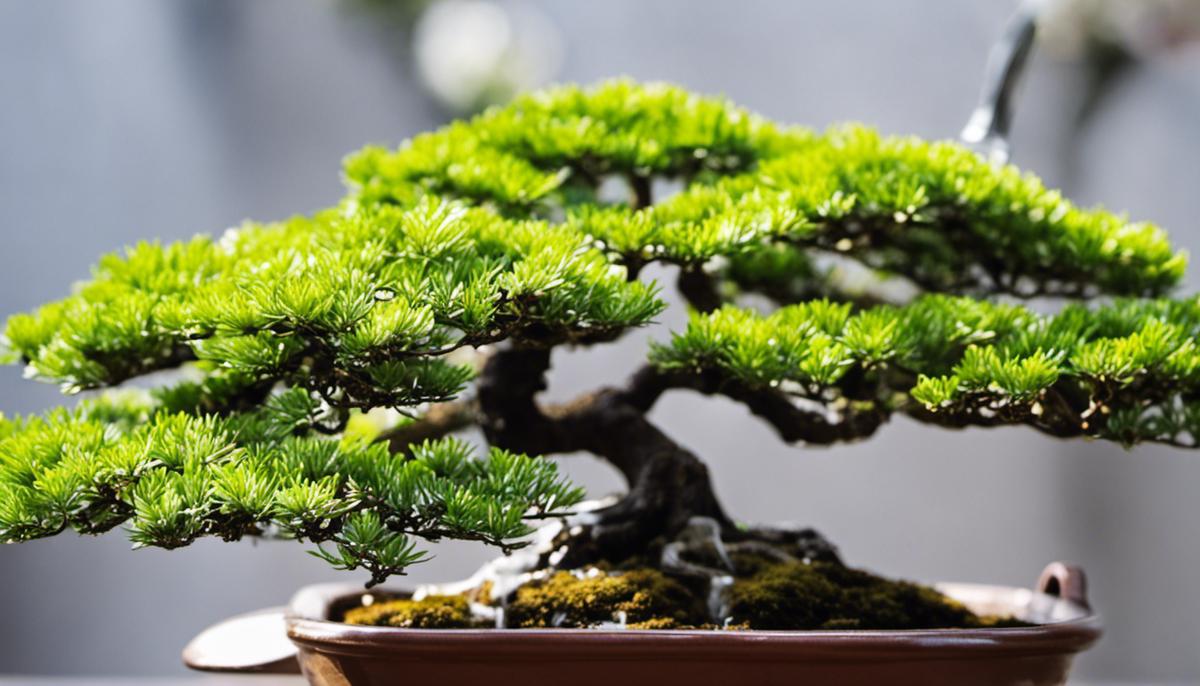
Bonsai is a dynamic, living art form that demands your time, attention, patience, and care. As your understanding and skills evolve, so will the growth and design of your Bonsai tree. Nourishing, pruning, wiring, shaping, and diligently guarding against diseases and pests are all part of the enriching journey of Bonsai cultivation. As you flip over this final page, it’s important to realize that you’re not at the end, but at the beginning of a life-long commitment and relationship with your Bonsai, one that will bring you tranquility, satisfaction, and continual learning. Welcome to the timeless art of Bonsai!
